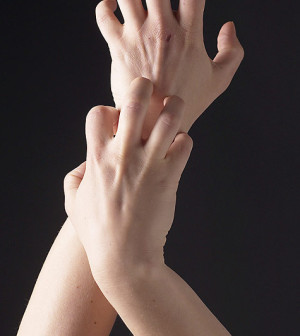- Navigating Your Midlife Crisis: Embracing New Possibilities
- City Raccoons Showing Signs of Domestication
- Mapping the Exposome: Science Broadens Focus to Environmental Disease Triggers
- One Week Less on Social Media Linked to Better Mental Health
- Your Brain Changes in Stages as You Age, Study Finds
- Some Suicide Victims Show No Typical Warning Signs, Study Finds
- ByHeart Formula Faces Lawsuits After Babies Sickened With Botulism
- Switch to Vegan Diet Could Cut Your Greenhouse Gas Emissions in Half
- Regular Bedtime Does Wonders for Blood Pressure
- Dining Alone Could Mean Worse Nutrition for Seniors
Hair Removal for a Beach-Ready Body? Do It Safely

If you’re plagued by patches of unwanted hair, waxing is one way to achieve a fuzz-free look — at least for a little while.
But, waxing needs to be done properly to prevent problems, a dermatologist says.
“At-home waxing can be an affordable method for hair removal, but it’s important to take precautions,” Dr. Jessica Krant said in an American Academy of Dermatology news release. She is assistant clinical professor of dermatology at SUNY Downstate Medical Center in New York City.
“Never wax sunburned or very sensitive skin, and don’t wax if you have taken [the acne medication] isotretinoin in the last six months. Also, it may be a good idea to leave Brazilian waxes to the professionals, since the skin in that area is particularly delicate,” she advised. (A Brazilian wax removes most or all of a woman’s pubic hair.)
Before waxing, make sure your hair is about one-fourth to three-fourths of an inch long. Longer hair can make waxing more messy and painful. Don’t use over-the-counter skin care products containing retinol and prescription retinoids two to five days before waxing your face. Otherwise, you could remove skin along with hair, Krant cautioned.
Taking over-the-counter pain medication or applying cold packs to the skin about 30 minutes before waxing may help reduce pain and discomfort. Before waxing, gently wash the area to remove dirt, dead skin cells and skin care products. Then dry your skin thoroughly. Clean, dry skin allows the wax to adhere properly, Krant said.
“Follow the directions on the package, and always test the temperature of the wax by applying a small amount to the inside of your wrist. It should be warm, but not hurt or burn,” she said. “Apply the wax to a small section of your skin with unwanted hair. For the best results, always spread the wax in the direction of hair growth.”
After the wax is applied, place the cloth strip over the wax, press down firmly, and leave the cloth on for two to three seconds. When removing the cloth, hold your skin taut with one hand and use the other hand to quickly pull off the cloth in the opposite direction of hair growth.
“If you’re waxing a tricky spot to reach, such as the underarms, consider asking a friend or relative to help you,” Krant suggested.
“After waxing, soothe your skin by applying cold packs if you have pain, avoiding hot baths and showers, wearing loose clothing and applying moisturizer that won’t clog your pores. Look for moisturizers labeled ‘oil-free’ or ‘non-comedogenic,’ ” she said.
“If you follow the instructions, at-home waxing is a safe and effective way to remove unwanted body hair. However, if you experience redness or swelling after waxing that lasts more than two days, see a board-certified dermatologist,” Krant said.
More information
The U.S. Food and Drug Administration has more about hair removal.
Source: HealthDay
Copyright © 2025 HealthDay. All rights reserved.










